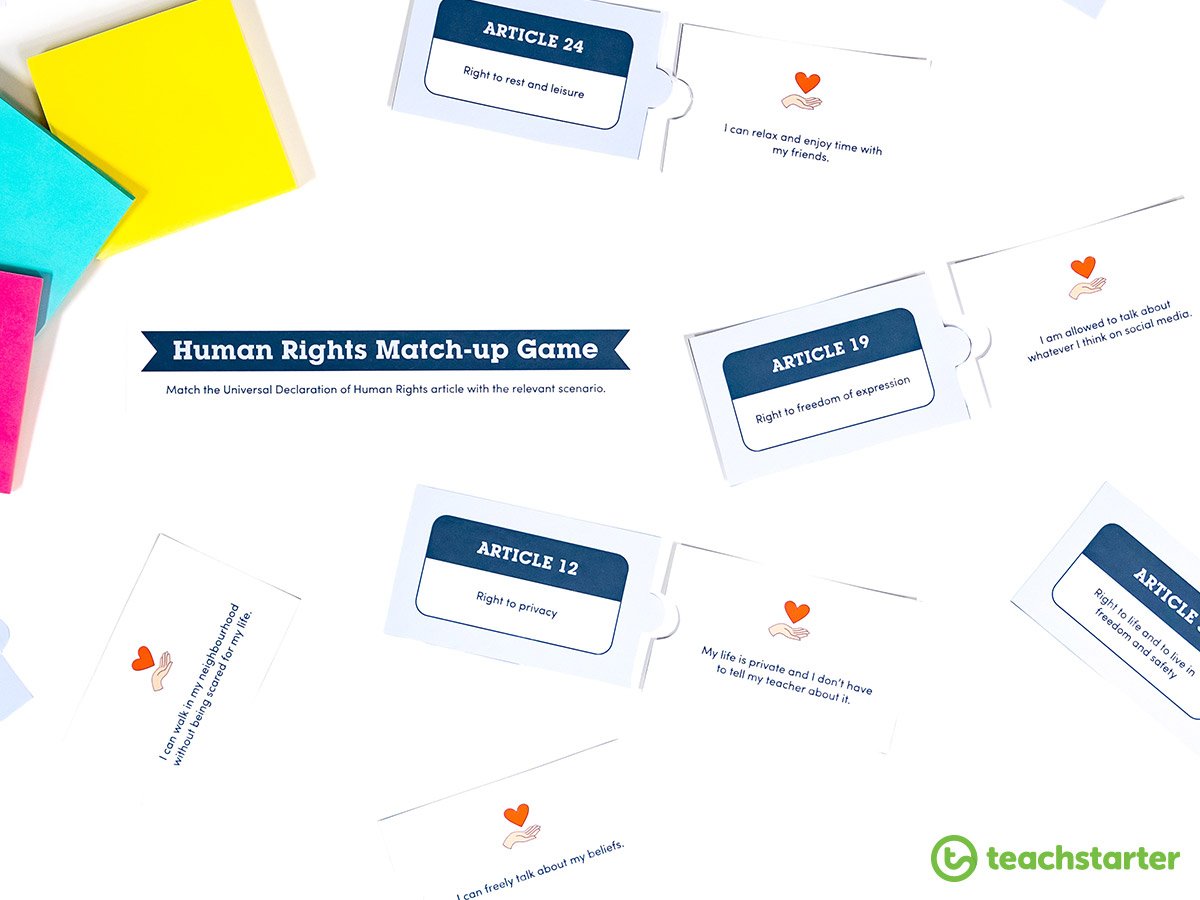

What are human rights? It’s a question more and more kids are starting to ask as they see adults around them sporting “women’s rights are human rights” t-shirts and hear people on the news talking more and more about social justice issues. December presents a perfect time to talk about this challenging topic with our students and bring some human rights activities for kids into the classroom — after all, it’s Universal Human Rights Month. Add these activities to your social-emotional lessons or perhaps a social studies lesson.
Educating kids about human rights is a way of protecting the fundamental freedoms many of us take for granted every day. Knowledge of human rights and the laws that protect all people gives the students the skills they need to promote, defend and apply human rights in daily life.
We’ve put together human rights activities designed to educate, inform, enlighten, and embolden kids from 5 to 15. There are a variety of activities you can do with the class which will give them a firmer grasp of what human rights are, why they are important and how to personally uphold and fight for what they represent. Let’s face it, in the wise words of Whitney Houston…
“I believe the children are our future. Teach them well and let them lead the way.”
A basis for any discussion of human rights, the Universal Declaration of Human Rights was developed by the United Nations as a common standard of achievements for all peoples and all nations.

Fruit trees typically produce only one kind of fruit, but a magical tree might produce a variety of unique and diverse fruits, much like the unique and diverse peoples of our earth.
In this activity, the students use the Create Magical Fruits Template to decorate unique fruit shapes to add to a Human Rights Magical Fruit Tree.
As a follow-up activity, the class can match the fruits with articles of the Universal Declaration of Human Rights and write the number of the article next to each magical fruit.
Amnesty International is an international, non-governmental organization based in London. Their stated mission is to campaign for…
“…a world in which every person enjoys all of the human rights enshrined in the Universal Declaration of Human Rights and other international human rights instruments.”
This human rights activity for kids is built off of a free Amnesty International video that explains human rights from their perspective.

There are 30 different articles in the Universal Declaration of Human Rights and it can often be difficult to understand how these articles relate to real-world events and situations.
The matching game contains only eight of the 30 articles of the Universal Declaration of Human Rights.
As a follow-up activity, have the students create their own cards to find ways to link the other articles of the Universal Declaration of Human Rights to everyday activities in their lives.
The United Nations Declaration of the Rights of the Child outlines, in language applicable for young kids, the rights of all children in the world as defined by the UN. Our United Nations Declaration of the Rights of the Child Flashcards outline each of the Rights of the Child.

In this activity, the students are tasked with a jigsaw collaborative learning task. In groups, the class will deconstruct one of the United Nations Declaration of the Rights of the Child and then present a poster, flyer, fact sheet or digital presentation to the class.
As a follow-up activity, have the class look at the new simplified 42 articles of United Nations Convention on the Rights of the Child. Discuss the additions and changes and how they have improved upon the original 1924 document.
December typically marks the Nobel Peace Prize celebrations and the presentation of the award.

The idea of being a peace advocate is important for all students and is something which should be encouraged, recognised and rewarded in the classroom.
In this activity, each student is to prepare an acceptance speech for a Classroom Peace Prize to be presented at a mock awards ceremony. The students can pick from one of the following award categories to base their acceptance speech on.
In this activity, the students will take part in a mock awards ceremony in which each class member is a winner.
As a follow-up activity, download the My Nobel Peace Prize activity which challenges students to write a paragraph about why they might receive the prize.